The holiday season can be a hectic time, which is why I decided to share some “hacks” to help you minimize your prep time during this crazy (but of course lovely) time of year.
Links & Resources:
- The Digital SLP Membership
- Large Snowman Video
- How to Build a Snowman Video
- Fake Snow Recipe + Blog Post
Full Transcript of Podcast: 3 Holiday Hacks for Low-Prep Therapy
Episode 43: 3 Holiday Hacks for Low-Prep Therapy
You're listening to the Speech Space Podcast, a podcast full of tips and resources for SLPs. I'm your host, Jessica Cassity, and this is Episode 43.
Hey everyone! Today, we're going to be talking about using three holiday hacks for low-prep therapy sessions. Before we get started, I wanted to take a brief moment to let you know that this podcast is brought to you by The Digital SLP membership site, which is a site that features time-saving no print and low-prep resources for SLPs. On January 15th, 2019, I plan to choose one lucky podcast reviewer to win a free year of access to The Digital SLP membership. So hop on over to iTunes and leave a review for the show and make sure that you're following my Instagram account @thedigitalslp. And on January 15th, I'm going to announce the lucky winner. If you'd like to learn more about the membership, please head on over to thedigitalslp.com/digitalslp.
All right, so let's go ahead and get started and talk about some low-prep therapy sessions during the holiday season. So my first advice to you is to utilize video. If you've been listening to this podcast, or if you tuned in to Episode 42, which was all about using video clips in speech therapy, then you know how much I love using video in speech. There are just so many great videos that you can easily use to work on a ton of speech and language goals. And I did want to just quickly mention that if you are a Digital SLP member who's currently listening then you do have access to about 50 or so videos with supplemental questions in your video library, and that is just going to continue to grow. So stay tuned. So I have two favorite videos that I'm loving right now, and they are both about snowmen. I will definitely make sure that I link to both of those in the show notes, but the first one is just a very brief clip on How to Build a Snowman. And what I love about that is that we can work on sequencing really easily and also retell. You also could assess auditory comprehension by giving your students supplies to make a pretend snowman indoors. And maybe that's just done by using cotton balls or cutting out white construction paper, or maybe that's even bringing some snow in from outside and putting it in a little plastic or Rubbermaid container or bowl. I also like to use cookie sheets to put snow on. And then, you know, with that, you just really want to do whatever's best for your students. You could even go outside if you needed some fresh air or your students needed some fresh air and they could try to replicate what they saw on the video. And they also could retell what they're doing as they're doing it, you know, sequencing the steps as they go. So lots of possibilities there, whatever you think is best for you and your students just go with it. The other video is about this insanely large snowman that a man in London built and students are really enjoying marveling about the size of the snowman. And it's really great for working on appropriate conversation skills on, you know, making relevant comments and asking appropriate questions, using descriptive language, and also retell.
Now my next holiday hack is to make fake snow. So there are only two ingredients necessary for making fake snow and that is a conditioner, like hair conditioner. And I should also add that white hair conditioner and baking soda. So this can be great for sensory bins. And I just did a post on this, which I will link to in the show notes so you can get the exact recipe that I used. But the idea is that you mix the conditioner and the baking soda together to make this soft pretend snow. And I do highly recommend keeping this mixture in a Rubbermaid or plastic container with a lid. And again, I show an example of what I used in that post that I just referenced. So you want to make sure that you check that out, if you want to see what I'm using, but making the snow is great for following directions. And once the snow is made, you can have the students build a scene and describe it. And one of the newer things that I've tried that I really love right now is to have a student build a scene, and then you can have them take a picture of it. They can use your phone or the iPad, if you have one. And then you're going to have them remove the scene and then describe it to another student while the other student attempts to recreate the scene based on the description. So this is similar to the process of a barrier game and it's really been a hit. So if you can work that into your sessions this week or next week, then I definitely recommend that you give it a try. The other thing that you could do is just basic, you know, you could get your basic articulation cards and have your students hide them, or you could hide them in the snow. You can use it as a sensory bin. And what I love to do with that is to work on descriptive language and wh-questions. So asking things like, what does the snow feel like? Look like? Smell like? There really are just so many different ways that you can use the snow. But my favorite thing about it really is how simple it is to make. And I just had a thought when I said, what does the snow smell like? So if you are kind of chemically sensitive, then you want to make sure that you get unscented white conditioner, or if you have chemically sensitive students. I am a little chemically sensitive, but not, it doesn't have to be a 100% fragrance-free. So check out that post again. Like I said, I'll link to that in the show notes. And I have a picture of the kind of conditioner that I used and had a really nice light fragrance.
Okay. So let's move on. Next hack is to bring in a box of chocolates to share, or it might be the time of year where you're getting a lot of box of chocolates given to you, and you can obviously use one of those. So I'm sure that everyone can get on board with this idea, right? Using chocolate in the speech therapy, but here's how I like to use it. I like to have students pick out two pieces of chocolate and then compare and contrast the shapes and the textures. That's kind of where we start on. This is also great for students with a device or using communication symbols. You can have those symbols out in advance and have your students describe the chocolate using their symbols or their device. They can then eat the candy and compare and contrast the flavors of the candy. And now, of course, you have to make sure that you know that their descriptions are right. So you have to eat the chocolate too, right? It sounds really difficult. I'm sure. So then you can eat the chocolate too and be like, oh right. This one is minty and that one is salty. And so then you can be eating chocolate during your speech therapy sessions. So that is my last hack for you guys for today.
And I hope that you enjoyed listening to today's show. As always, if you like what you heard, please take a moment to leave a five-star review on iTunes to help your fellow SLPs find this show. And don't forget that right now, I'm doing a giveaway where one lucky winner who reviews the show by January 15th, 2019, will win a free annual subscription to The Digital SLP membership. The winner will be announced on Instagram so make sure that you're following @thedigitalslp. And to access the show notes from today's episode so you can reference those blog posts that I was talking about earlier, you want to go to bit.ly/slpholidayhacks. All right! That is it for me for today. I thank you for tuning in, and I hope that you have a happy and safe holiday season, and I will talk to you in 2019.


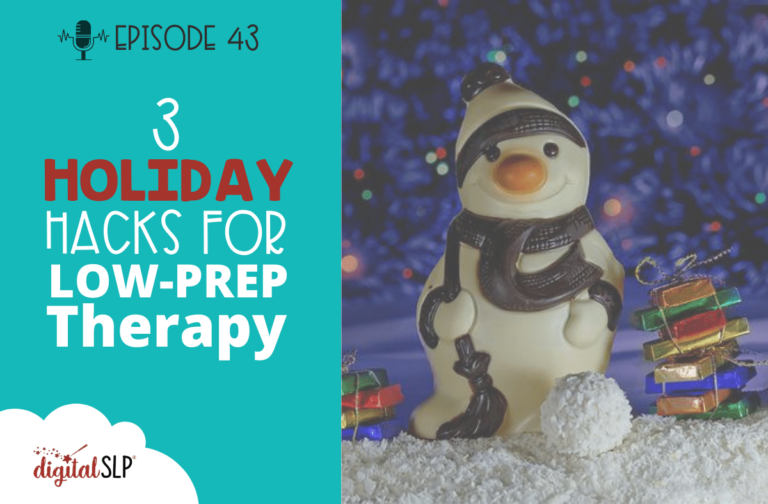




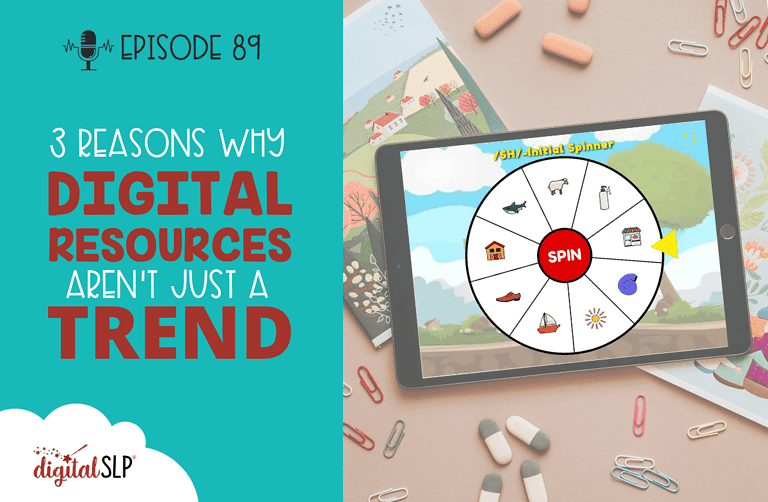
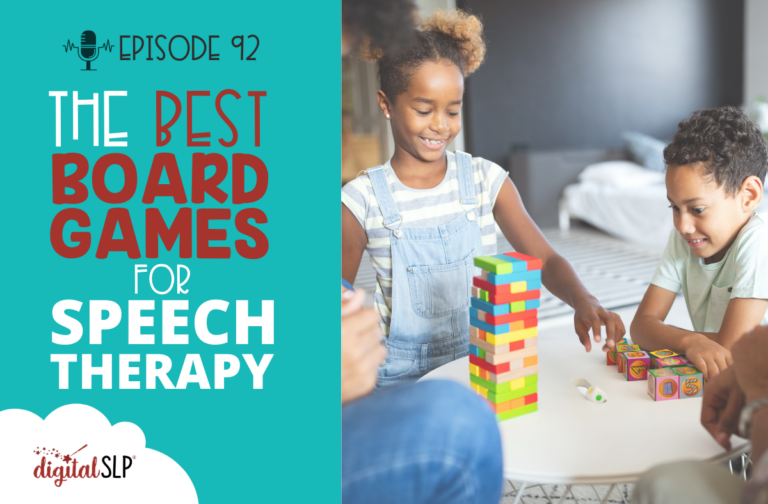
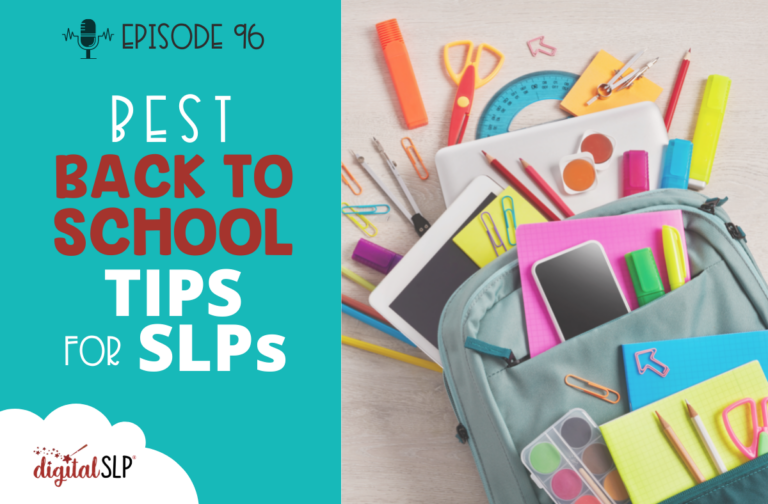
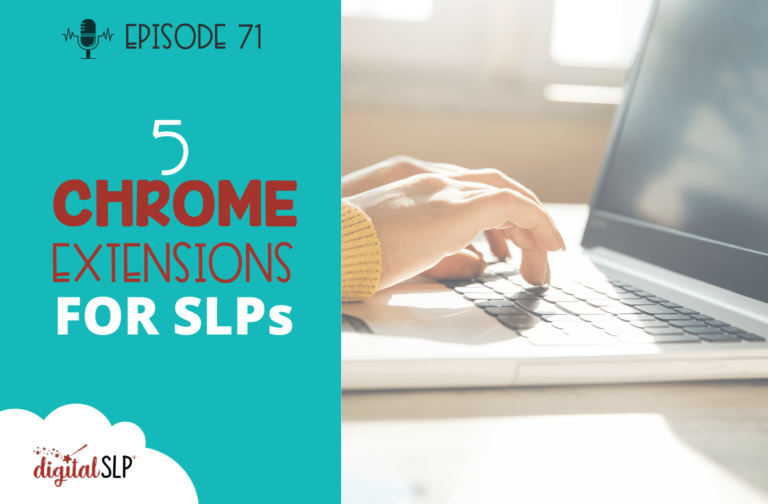
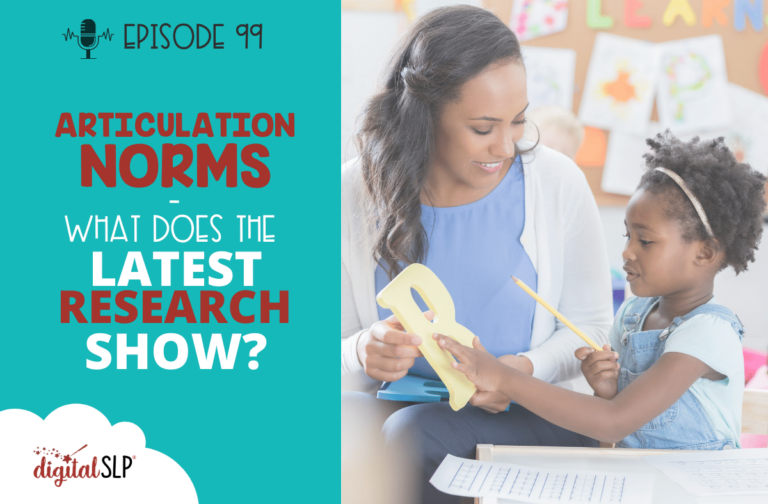


Recent Comments